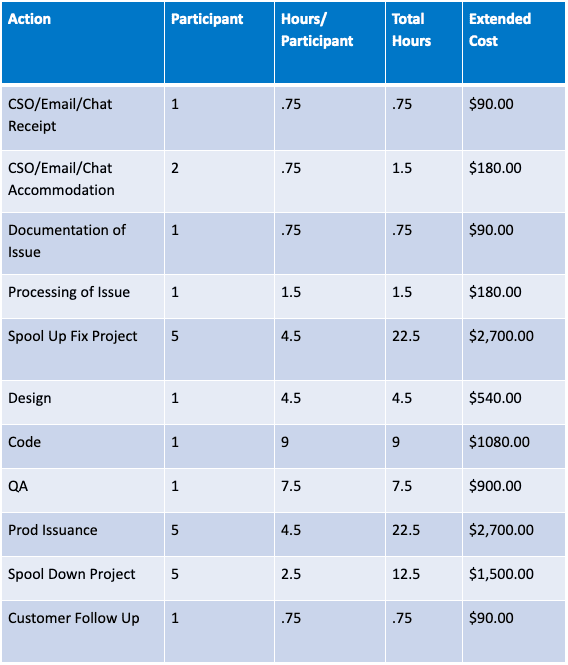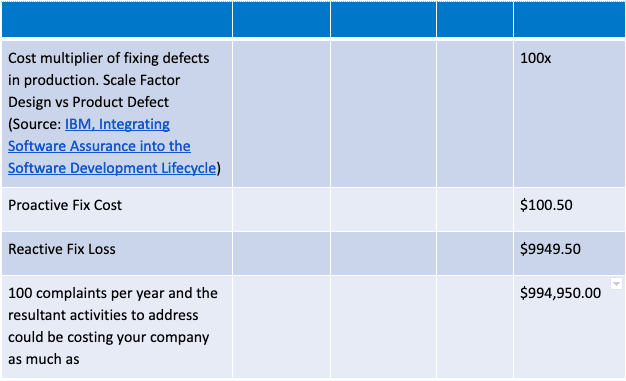
Digital equality — or access to the internet by making it accessible to everyone, including those with disabilities — is a serious moral and ethical issue. If left unchecked, digital inaccessibility can also be expensive and harmful to your brand.
Lawsuits against companies with inaccessible sites are increasing and the US federal government has mandated (via the 21st Century IDEA Act) that all its sites and content must report on the status of their Section 508 accessibility compliance by the end of the year. Recent headlines aside, we often don’t stop to consider accessibility from a dollars and cents perspective, but when we do, the results are eye-opening.
My team and I recently conducted a careful analysis to determine exactly how much accessibility issues are costing a typical enterprise within the sectors that are most impacted by accessibility complaints and lawsuits, including retail and e-commerce, travel and hospitality, entertainment, food service, banking/finance, and self-service.
The study is focused on the US market, but companies all around the world should be aware of the costs. Here’s what we found, followed by suggestions on what organizations should be doing about it.
The costs of responding to a digital ADA complaint are staggering
If a user has been discriminated against because of their disability, they may file an Americans with Disabilities Act (ADA) complaint against your business. Discrimination manifests in many ways, but we’re going to focus on digital inaccessibility.
An ADA complaint is a “warning shot” for additional legal action to come. Fixing accessibility issues in reaction to an ADA complaint can be quite expensive. We’ll talk about proactive accessibility testing looks like later in this post, but first, let’s break down the reactive costs:
Using average compensation and labor timeframes gathered in the course of our work with Fortune 50 companies, we estimated that addressing of a single web accessibility complaint costs almost $10,000.
How did we arrive at that number? We calculated a combination of call center personnel and management, regulatory personnel, product management, developers, quality assurance and operations staff, in a blended rate of $120/hour x the number of individuals involved x total hours spent. I’d highly encourage you to arrive at your own blended rate and reference the table below to calculate your own potential costs.


You also can’t forget the legal costs, which can be huge
Lawsuits against companies with inaccessible websites exploded 181 percent from 2017 to 2018. Since the beginning of 2019, several high-profile organizations found themselves in the crosshairs of digital accessibility lawsuits.
Once again relying on data from our experiences with Fortune 50 companies, we examined the costs associated with the litigation processes — including inside and potentially outside counsel — as well as court fees, documentation costs, and more.
When all of these costs were added up — at the higher average worker cost of $225 per hour — we determined that a simple and quickly settled digital accessibility lawsuit would cost the defendant an estimated $350,000.
You need to also consider the lost market opportunity
It’s a bit harder to specify a monetary amount for this one, but consider the following takeaways from “The Purchasing Power of Working-Age Adults With Disabilities” and American Institutes for Research. The total after-tax disposable income for working-age Americans with disabilities is approximately $490 billion.
This is almost as big as the African American ($501 billion) and Hispanic ($582 billion) markets in the United States. People with disabilities represent 35 percent of working-age adults – that’s 20 million people. If your website is not accessible, you are locking out huge market segments.
With costs so high, what can you do? The best defense is a good offense, and accessibility demands a pragmatic approach. Start with the following:
1. Proactively address accessibility from the earliest possible stages of the development process
Failure to identify exclusionary design is significantly more expensive and risky after the software goes into production. It also means fixes need to be implemented after you’ve already deployed, potentially creating disruptions to your development process and loading up your backlog.
Accessibility testing should be integrated into your early development process where we’ve seen most developers catch 30 to 50 percent of all potential accessibility lapses. Ideally, accessibility should be considered as early as the design phase of your process.
However, even the most accessible websites in the world will contain flaws, and organizations must continue to be diligent with accessibility testing after deployment, including regression testing (making sure code changes do not inadvertently introduce new accessibility issues).
2. Start small and continuously build on successes
Addressing accessibility for the first time can seem like an overwhelming process. The good news: you can start for free by utilizing some great automated testing tools or include accessibility tests into your existing testing environment with an accessibility rules libraries, which is open-sourced and continually enriched by actual developers.
Don’t focus on unrealistic perfection right out of the gate. Begin by incorporating basic best practices for the most critical issues — for example, adding captions to videos for users with hearing impairments; clear image descriptions (e.g. “click here to buy brown loafers”) when someone who is visually impaired uses a screen reader — and then strive for constant improvement.
3. Motivate and empower developers
Motivating developers is key to a sustainable, impactful web accessibility initiative. A great way to foster your development team’s enthusiasm for accessibility is to host empathy events where your team can learn and directly experience how people with disabilities use technology and how their disabilities and assistive technologies impact that experience.
Some developers value participating in open source projects and communities, and today there are abundant opportunities to contribute to these projects supporting the Web, Android, iOS, and Windows platforms. Many of these projects are still nascent, so there are lots of opportunities to make valuable and meaningful contributions.
Conclusion
In our increasingly empathic society, accessibility — or the lack of it — is becoming a more visible issue. No longer a nice-to-have, it is quickly becoming a must-have. There is clear evidence among development teams that accessibility is becoming an ingrained part of their jobs.
We are fortunate to live in a society that encourages innovations that enable people with disabilities to navigate the internet independently. If your organization isn’t keeping up with this wave of innovation and inclusion, you may be at risk for incurring large costs. Besides enriching the lives of millions of persons with disabilities, practicing accessibility proactively protects your brand and bottom line.
Get the TNW newsletter
Get the most important tech news in your inbox each week.




